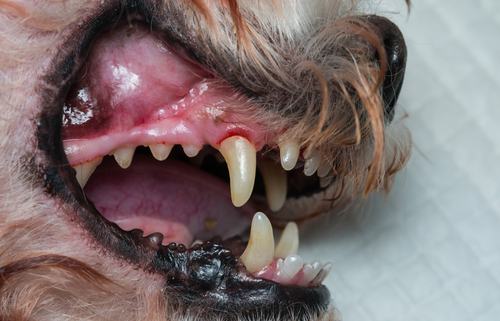Preventing Loose Teeth in Dogs
Most times, underlying causes of loose teeth in dogs, such as gum disease, rarely show obvious symptoms. As a dog owner, you must know exactly what to look for and how to properly take care of your dog’s teeth and gums to help prevent loose teeth. This article will give you more information on the potential causes, symptoms, treatments, and preventative care techniques used for loose teeth in dogs.
Keep in mind that losing puppy teeth is a normal part of life. However, losing adult teeth is often a sign of advanced gum disease. The American Veterinary Association estimates that 85 percent of dogs over age three exhibit minor to severe gum disease. Trauma is another reason for loose teeth in dogs. For example, if your dog recently had a collision with another dog, loose teeth may result because of the accident. It is important to work with your veterinarian to pinpoint the cause of the loose teeth and create an appropriate care plan.
Let’s talk about some of the symptoms of loose teeth. You may notice your dog exhibiting signs of swelling or pain in the injured area. There may also be bleeding around the tooth which may cause damage to the gum tissue and overall tooth structure. With gum swelling and discoloration comes pain, which may show in the form of eating difficulties. Take a closer look at your dog’s eating patterns. Your veterinarian can help determine if gum disease or loose teeth are the main factor.
Gum disease is something that you need to take seriously. Without treatment, this disease continues to worsen, causing your dog to experience more pain. Eventually, the affected teeth with start to loosen and fall out. The bad thing is that without teeth there to act as an anchoring structure, the jawbone will start to recede. Unfortunately, dogs can suffer up to 50 percent bone loss in their jaw. Just as humans, if gum disease is not treated there is a significantly increased change of heart disease, diabetes, and even cancer. Take it seriously!
How can you help? Regular checkups and tooth cleaning procedures are necessary to protect the dental health of your dog. Your veterinarian will need to put your dog under anesthesia for up to an hour to scrape away the plaque and clean each tooth surface in full. Daily brushing of your dog’s teeth is the best preventative care you can provide. Grab a good doggie toothbrush and an approved toothpaste and get to work! We hope that you learned a lot about loose teeth in dogs. As you can see, there are a lot of preventative measures. Do your part to stay ahead of the game.



